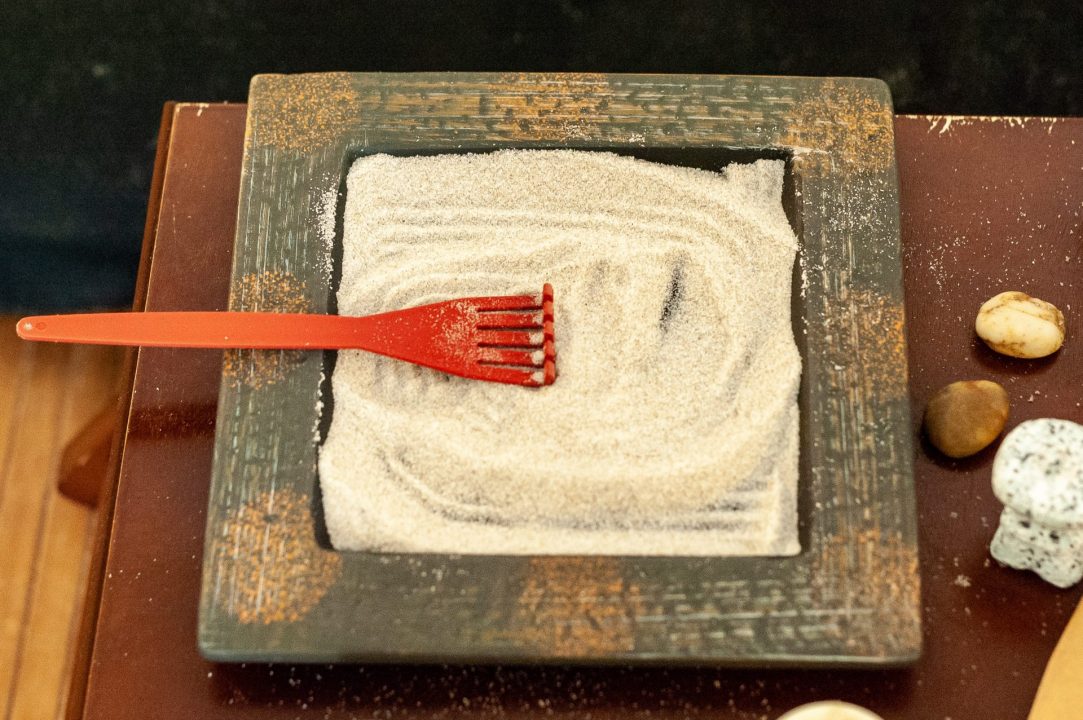Students designed kinetic sea monster sculpture for race in Baltimore
This year’s Interdisciplinary Studies 430 class constructed a 15 foot, rideable, sailable kraken for the annual Kinetic Sculpture Race in Baltimore. The project was an intense collaboration of design and engineering.
A plastic kraken traversed campus Wednesday, April 22. The 15 foot sea monster was created as an entry in the upcoming Kinetic Sculpture Race hosted by the American Visionary Art Museum in Baltimore. Participants in the event build works of art that are mobile both on the ground and in the water. Now in its seventeenth year, the race covers 14 miles, some of which are in the harbor.
Previous UMBC students have participated in the race as club members, but this is the first year that students will participate for credit. The octopus-on-wheels, which took two semesters to build, was produced by students in the Interdisciplinary Studies 430 class.
The group beamed with enthusiasm as they showed off the beast to URCAD attendees. Made of chicken wire, plastic bottles, bamboo and other recycled materials, the piece was designed to make a statement about waste.
“Everything here has been upcycled from something else” said Stephen Moore, a senior majoring in computer engineering and math with a minor in writing. With 3,000 discarded plastic bottles making up the kraken’s green color, the message about recycling is apparent.
Along with raising awareness about pollution, the creation truly demonstrates the the ingenuity and dedication of UMBC students. Comprised of students from different disciplines, the INDS 430 class brought together their skills and hard work to make the project a success.
Mai Huynh, a senior visual arts major with a focus on graphic design, worked on the designs over winter break.
“The class had so many ideas. Sometimes we’d stay up until 10 or 11 p.m. working on the project,” said Huynh.
Built on a quadricycle, the class rode the sculpture around campus. Moore recalled the vehicle’s first test run.
“We went downhill and realized we couldn’t brake,” he said with a laugh. The group has worked out small oversights, and they now feel ready for the race.
The sculpture is also seaworthy, and the students believe it will stay afloat in Baltimore’s harbor. Large, donated barrels kept the sculpture afloat on its test sail in the Pigpen Pond at the bottom of Hilltop Circle.
Nine members of the class piled into the vehicle as Dr. Hrabowski came by. On his way to deliver a speech, he stopped to admire the students’ hard work. While Hrabowski posed for photos with students, one student honked the vehicle’s horn, which made Habrowski jump in alarm.
As students explained their concept, they made it clear that INDS 430 offered them an environment of experiential learning.
“It’s a plastic sea monster. Plastic polluting the sea is killing animals,” Moore eagerly explained, sitting on one of the barrells.
As Hrabowski moved on to deliver his speech, the students leapt up to take their sculpture on another trip around campus.
“Let’s get cracking,” One joked, echoed by his peers.
You can see the kraken in action May 2 in Baltimore. The race is free to attend.








